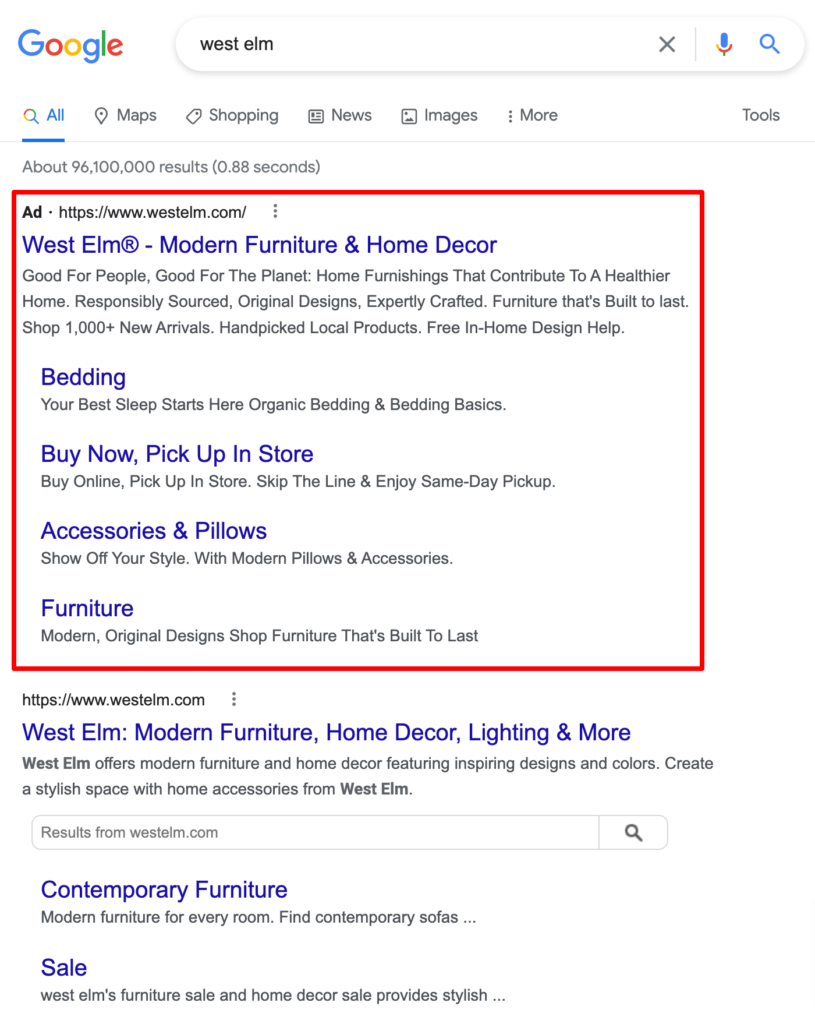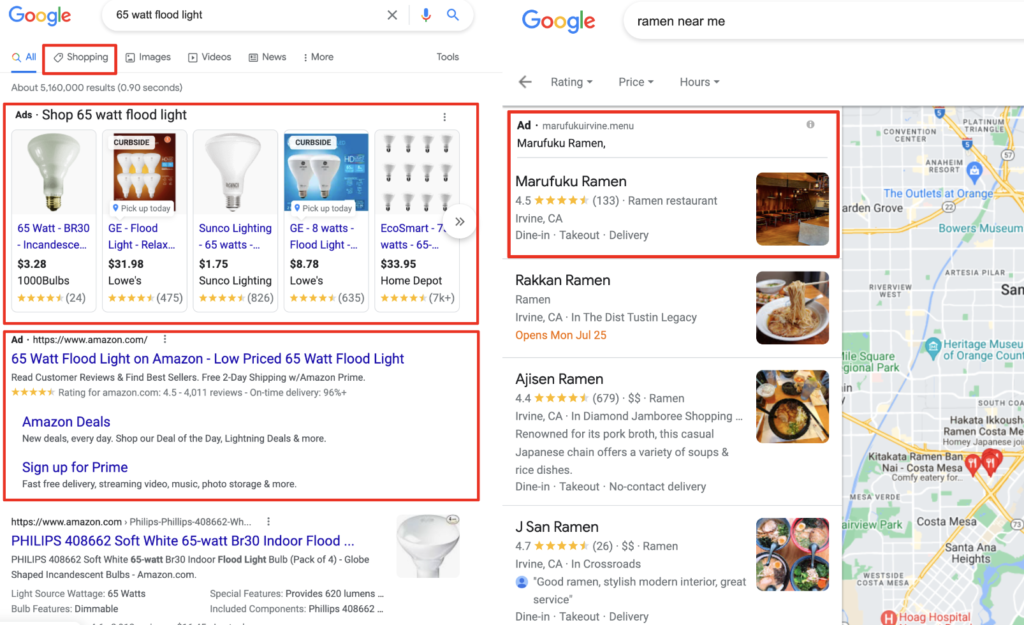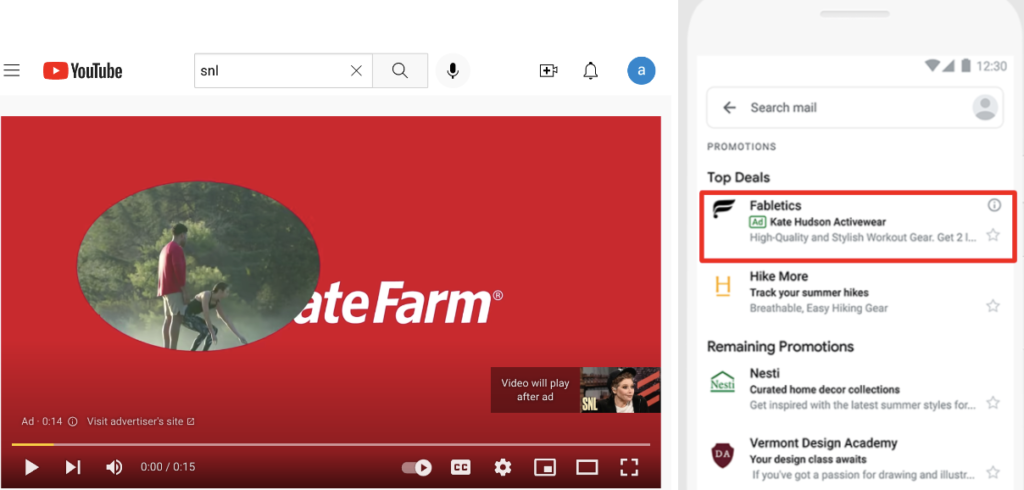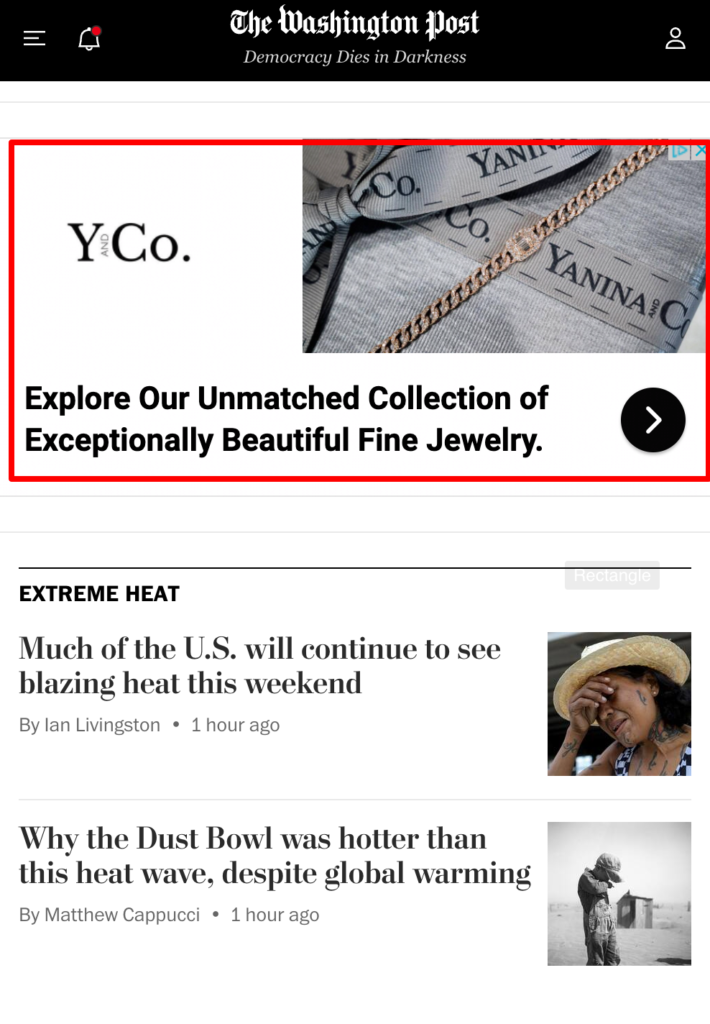Google advertising spend shows no signs of slowing down, with spend reaching $84.7 billion last year. Brands continue to place a value on Google advertising because it is extremely effective.
For one thing, these ads reach way more people. Between four to ten times as many people click on a Google ad (63%) than an ad on any other search engine, including Amazon (15%), YouTube (9%), and Bing (6%). And, Google ads generate significantly more ROI. For every $1 spent on Google Ads, a business brings in roughly $2 in revenue.
Are you considering adding Google Ads to your marketing arsenal? Smart move. Read on as we explain how Google Ads works.
Sections
What are Google Ads?
Google Ads describes the universe of advertising options Google offers. Google Ads encompasses several different types of ads. Google’s text search ads may be the most recognizable. These appear at the top and bottom of Google search results.

However, there are other ads that appear in the traditional search results. You might see Google Shopping ads displayed in a carousel at the top or side of your search results, or toggle over to the Google Shopping tab to see even more ads. There are also local ads that may appear in Google Maps.

Google ads appear in other places beyond the search results, as well. For example, you can see video ads on YouTube, or Gmail ads in your Gmail inbox.

And if you run Display ads, you can tap into Google’s massive network of over 2 million websites and apps and have your ads appear throughout the web, such as this display ad on a news website.

This is just an overview of some of the Google ad formats you can use in your campaigns. Learn more about each type in our guide to Google Ad formats:
- Text ads
- Image ads
- Video ads
- Responsive ads
- Product Shopping ads
- Showcase Shopping ads
- Call-only ads
- App promotion ads
How does Google Ads work?
Google Ads works on a pay-per-click, or PPC, advertising model. That means you only pay when someone clicks on your ad. For your ad to appear, you’ll participate in the Google Ads auction. You’ll upload a list of keywords — relevant phrases that you want your ad to appear for (such as black men’s sneakers for a footwear brand) — into Google Ads. Then, you bid on those keywords and set a price for how much you’re willing to pay.
Meanwhile, google calculates a Quality Score for your ad. This measures the overall quality of your ad, and it includes things like:
- How relevant your ad is for the particular keyword you’re bidding on
- The quality of the landing page your ad is linking to
- Your click-through rate
The higher your Quality Score, the lower your cost per click. A good range to shoot for is a score of 8 or above.
Depending on what you sell, there are likely more advertisers bidding on a particular keyword than there are available ad spots. So, how does Google determine which ads appear and which don’t? Google relies on a formula that combines your bid and your Quality Score. The answer to that formula will determine whether you appear, and how much you’ll pay.
Make Google Ads work for you
As you can see, there are a lot of moving parts to Google Ads. There are dozens to hundreds of ad formats, targeting criteria, and ad tips and tricks to understand. It can help to have an expert on your side.
If you’re ready to get up and running on Google Ads, contact Your Marketing People. We have proven experience in developing and delivering campaigns that build awareness, drive conversions, and exceed ROAS goals.







